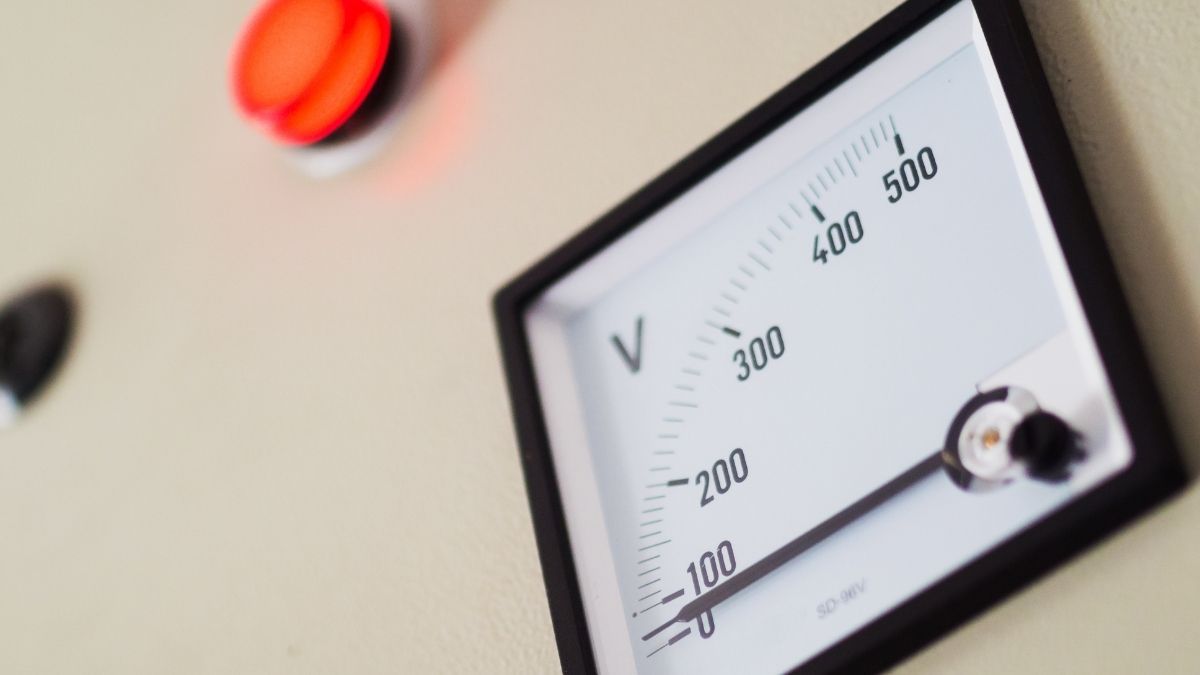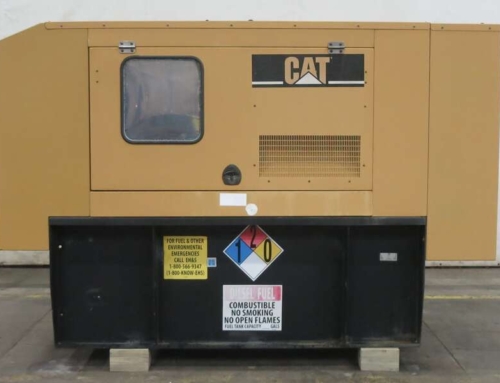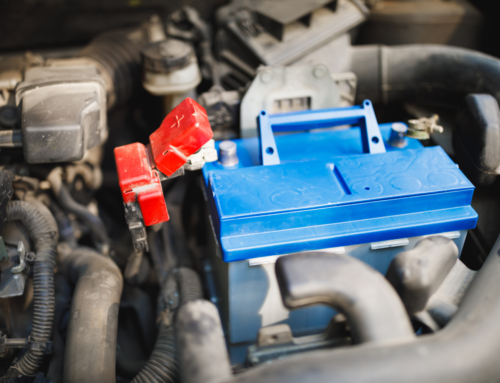Generators are complex equipment that is important, when utilized on a construction site or in a building. They are critical instruments in an emergency, providing warmth and electricity when there may be none. However, many individuals need to be made aware of the necessity of generators, particularly the automatic voltage regulator. Let’s see what is an Automatic Voltage Regular, its importance, its functions, and how does it work?
What is an Automatic Voltage Regulator?
An automatic voltage regulator, more commonly referred to as an AVR, is essentially a solid-state electronic device, used in diesel generators. The AVR is designed to facilitate the automatic maintenance of generator output terminal voltage at a preset value, especially when there is a change in the generator load, or the operating temperature of the generator undergoes a shift. Simply put, the AVR can be said to be an integral part of the alternator’s excitation system.
Did you know? It is not the generator manufacturer that provides the Automatic Voltage Regulator, but the alternator manufacturer! After all, the AVR is essentially a part of the AC Alternator. Here, the model of the AVR supplied with the alternator will largely depend on the type as well as the accessories fitted to the alternator.
It stabilizes the generator’s output, which frequently has irregular loads, and it can distribute the reactive load amongst numerous parallel generators (called voltage droop) and aid the generator when overloaded.
Placement of the AVR in a Generator
In general, automatic voltage regulators can be found in any of the following mentioned places –
- In the main control box of the generator
- In the alternators terminal box
- Under the alternator’s rear cover (usually in the case of small portable gensets)
Several types of Automatic Voltage Regulators (AVRs) control and regulate electrical power systems. Some of the most common types include-
Different Kinds of Automatic Voltage Regulators
Electromechanical AVRs
These are the oldest type of AVRs and rely on mechanical components such as rotors and stators to regulate voltage. They are relatively simple in design and can handle various voltage and power levels.
Static AVRs
These use solid-state components such as transistors and thyristors to control the voltage output of a generator. They are more reliable and efficient than electromechanical AVRs but may be less robust in extreme conditions.
Microprocessor-based AVRs are the most advanced type of AVRs and use digital controllers, typically microprocessors, to regulate the voltage output. They offer the highest level of accuracy and can be programmed to adapt to different operating conditions.
Digital AVRs
Same as Microprocessor based AVR but instead of using a microprocessor as the digital controller, it uses a digital signal processor, which is specialized for high-speed mathematical operations.
Servo Motor AVR
This type of AVR uses a servomotor that adjusts the generator’s excitation in response to the electrical load and voltage changes. It uses a control loop for better accuracy and performance.
Computer Controlled Regulator
As the name implies, it mainly depends on the overall load current of the systems as transmitted to the generating computer. The engine computer guarantees that the magnetic field circuit is switched on and off on time according to the specified value, allowing the electrical system to operate normally.
Because AVR is a crucial component of the generator, obtaining it from a reputable generator dealer, including Central States Diesel Generators, is strongly advised. This ensures that you have precise information about the item and can be confident in its upkeep and preservation for an extended period.
Note that these are not an extensive list and other AVR types, such as IC-based AVR, etc., also exist in the market.
An automatic voltage regulator (AVR) is a device that automatically maintains a stable voltage level in an electrical power system.
What are the Functions of Automated Voltage Regulars (AVR)?
AVR’s primary functions are as follows:
· It regulates and stabilizes the generator’s voltage.
· It works as a machine to maintain the voltage’s steady-state stability.
· It reduces the high voltage by distributing the reactive load across parallel alternators (Alexander, 2016).
· The AVR regulates the overvoltage caused by an abrupt decrease in load.
· It enhances the system’s excitation under fault situations.
· It assures that synchronization power persists after fault circumstances are removed.
· The AVR adjusts the excitation system’s load when the load varies to maintain the voltage constant.
· It is used in the exciter field. Furthermore, it modifies the field current and exciter output voltage.
· During severe oscillations, it remains calm and does not respond. This keeps the voltage stable and continuous.
How does a Generator AVR work?
An AVR primarily functions by controlling the generator output voltage. It accomplishes this task by first sensing the voltage from the generator terminals, and then comparing the same to the preset stable reference value to check for the error signal, if any. In case of a discrepancy between the two, the ACR adjusts the field current by increasing or decreasing the current flow to an exciter stator. This, in turn, ensures a lower or higher voltage, respectively at the main stator terminals.
As you may have understood by now, the AVR works as an adjustment device that ensures that the voltage output of the generator remains within a predefined range. Consequently, it makes sure that the generator voltage never drops as low as to result in the malfunctioning of any connected electrical equipment or electrical devices. It also helps save the generator from an insufficient battery charge.
The adjustment of the generator output becomes essential when the speed of the generator changes – this largely happens when the speed of the generator engine changes, as a result of the transmission ratio of the generator to the engine being fixed. A stable voltage during this time ensures the safe functioning of both – the electrical equipment that the power is being supplied to, as well as the generator battery.
You may also like to read: 3 Phase Industrial Generator Buying Guide
Why are AVRs (Automatic Voltage Regulators) important in Generators?
Unregulated generators, or generators that lack an automated voltage regulator (AVR), are often incapable of meeting the power requirements and needs of every piece of equipment or device attached to the generator. Because specific unregulated generators cannot control or regulate voltage, the terminal voltage will constantly decline as the load needs grow.
The performance of a generator as a whole may suffer if the voltage is not maintained at a fixed, consistent rate, and any appliances, machines, or other items that are powered by the generator may also suffer from the unregulated generator’s adverse effects.
The automatic voltage regulator (AVR) is closely related to the performance and durability of your generator, as well as the things that the generator powers, and guarantees that the voltage output produced is consistent in its load current, even if variations occur in the background. This reduces and sometimes eliminates the harm that variations can cause to appliances, equipment, devices, and machinery.
Final Takeaways
With extensive knowledge of the market and a focus on commercial backup power generator sets, our industry specialists at Cs Diesel Generators can assist you in selecting the ideal generator for your requirements. We provide generators to industrial buildings, data centers, hospitals, commercial business facilities, and more!
Our professionals are here to help you locate the finest choices in our inventory by addressing any concerns you may have regarding power generator sets.
Our specialists can advise you on prime, constant, and backup power generators and the finest surplus, new, or even used commercial generators for your specific purpose.
We exclusively sell the highest-rated new, secondhand, and surplus power generator sets, giving you a fantastic value generator that fits your budget.
Our generators are professionally examined, maintained, and validated, ensuring you purchase a high-quality generator on which you can rely. If a generator does not meet industry requirements, we undertake all required repairs or adjustments and thoroughly test each generator before selling. This provides a complete turnkey generator that is good to go!
We are certain that we can discover the design that best meets your operating demands due to our large assortment of generator sets.
Frequently Asked Questions about Automatic Voltage Regulators
1.What causes AVR failure?
The reason for AVR damage was because of a decrease in performance of the generator driving motor, which led the engine rotation to suffer instability when exposed to electric load, resulting in voltage fluctuations, which led the AVR to function abnormally, resulting in AVR damage.
2. Do all generators have an AVR?
When you purchase a new generator, the AVR includes a generating set. This depends on the type of accessories used with the generator. As a result, each generator has its AVR.
3. How is voltage regulated in a generator?
The generator excitation mechanism makes this possible. The excitation system manages the magnetic field and checks the generator output to keep the required voltage. As the generator’s load increases, so do the current flow, causing the voltage to fall.
4. How does an AVR work?
Automatic voltage regulators (AVRs) assist generators in adapting to overloads by stabilizing the output voltage of generators under varying loads. They may also distribute the reactive load amongst generators that are operating in parallel (voltage droop).
5. Are AVRs available in different designs?
While most AVRs look alike, they may sometimes vary in size as well as color. That said, all AVRs have strikingly similar features and hence don’t differ much in functionality.











